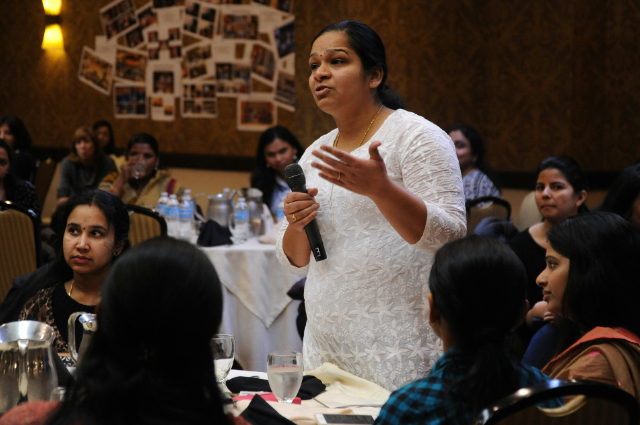
Photo by Wonderlane on Unsplash
Empowering women is central to enhancing social indicators such as literacy, healthcare, and economic growth in India. Despite notable progress, systemic gender inequalities persist, requiring sustained, multifaceted efforts. This essay examines the relationship between women’s empowerment and social progress in India, focusing on education, economic opportunities, healthcare, and political participation.
Education: The Key to Empowerment
Education is foundational to women’s empowerment. Programs like बेटी बचाओ, बेटी पढ़ाओ (Save the Daughter, Educate the Daughter) have improved girls’ school enrolment, especially in rural areas, achieving near gender parity at the primary school level by 2020. These gains reflect initiatives such as conditional cash transfers and free bicycles for schoolgirls in states like Bihar, which have reduced barriers to education. Educated women are more likely to delay marriage, access better economic opportunities, and contribute to improving health and education outcomes for future generations. However, challenges remain. Many girls drop out during secondary education due to economic pressures, societal norms, and early marriage. Overcoming these barriers requires further investment in vocational training, gender-sensitive school policies, and campaigns that promote the value of girls’ education to families.
Economic Opportunities and Financial Independence
Economic participation is vital for women’s empowerment but remains limited in India. The female labour force participation rate was only 24% in 2020, among the lowest in South Asia. This low rate stems from traditional gender roles, workplace discrimination, and safety concerns. Nevertheless, initiatives like महिला ई-हाट and the स्व-रोजगार महिला संघ (सेवा) Self-Employed Women’s Association (SEWA) have supported women entrepreneurs and helped rural women generate income. Microfinance institutions such as SKS Microfinance and self-help groups (SHGs) have empowered women by providing access to credit, enabling them to start small businesses. Programs under Startup India also encourage women-led enterprises, offering tax benefits and mentorship. Additionally, addressing workplace barriers through gender pay equity, safe transport, and childcare facilities could increase women’s participation in the workforce. When women earn and control their income, they reinvest in their families, improving nutrition, education, and overall social well-being.
Healthcare Access: A Transformative Tool
Access to quality healthcare is a cornerstone of empowerment and social development. Initiatives like जननी सुरक्षा योजना (Safe Motherhood Scheme) have incentivized institutional deliveries, reducing maternal mortality from 254 per 100,000 live births in 2004-2006 to 97 in 2018-2020. Programs such as पोषण अभियान aim to address malnutrition among pregnant women and young mothers, ensuring healthier generations. Family planning campaigns under मिशन परिवार विकास have enhanced reproductive health, giving women more control over their lives. Additionally, organizations like गूंज have improved menstrual hygiene by breaking taboos and providing affordable sanitary products to marginalized communities. However, disparities persist in rural and remote areas, where access to primary care is limited. Strengthening healthcare infrastructure and scaling mental health awareness campaigns are crucial for bridging these gaps. Empowered women who prioritize healthcare positively impact families and communities, driving broader societal progress.
Political Participation and Leadership
Political representation is another significant dimension of women’s empowerment. The 73rd and 74th Constitutional Amendments have mandated 33% reservation for women in local governance, leading to over a million women participating in decision-making at the grassroots level. Women Panchayat leaders in states like Kerala and Rajasthan have driven improvements in education, sanitation, and health. However, women’s representation in national and state legislatures remains low at around 14% in Parliament as of 2022. Greater inclusion in higher political roles can enable women to shape policies on issues such as gender-based violence, workplace discrimination, and education reforms. Encouragingly, prominent women leaders such as Indira Gandhi and President Droupadi Murmu serve as role models, inspiring women to challenge traditional gender norms. Expanding gender quotas and leadership development programs will further enhance women’s political participation and advocacy.
Challenges and the Path Forward
Despite progress, deep-rooted patriarchal norms, gender-based violence, and unequal resource access continue to hinder women’s empowerment. Addressing these challenges requires a multi-pronged approach:
- Legislative Reforms: Enforcing laws against child marriage, workplace harassment, and domestic violence.
- Awareness Campaigns: Programs like नारी शक्ति अभियान promote gender equality and celebrate women achievers.
- Skill Development: Expanding training in STEM and technology equips women for future workforce demands.
- Collaborations: Partnerships among governments, NGOs, and private sectors amplify initiatives and foster innovation.
Conclusion
Empowering women in India is a transformative process that drives sustainable social and economic development. Progress in education, healthcare, economic opportunities, and political participation underscores the potential for significant change. While systemic challenges remain, targeted efforts can dismantle barriers, enabling women to thrive and contribute fully to society. By investing in women, India can unlock unparalleled social and economic potential, creating a more equitable and prosperous future for all.
